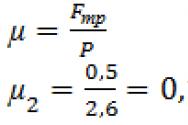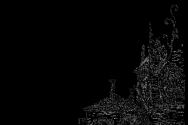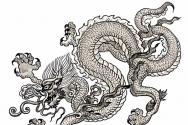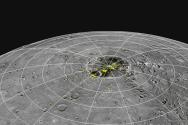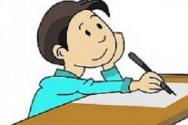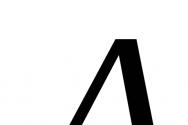What plant grows near the school. Lesson on the world around us “What grows near the school. Thanks everyone and see you soon
Lesson of the surrounding world in 1st "B" class of Municipal Educational Institution Secondary School No. 26, Volgograd
Subject: What grows near the school (trees, shrubs, herbaceous plants).Target: 1. Teach to distinguish and classify trees, shrubs, and herbaceous plants by external characteristics in the natural environment and the school environment. 2. Based on visual aids, draw up diagrams of a tree, shrub, or herbaceous plant.Equipment: Image of facial expressions, the word GARDEN on cards of different colors (consonants - blue, vowel - red), table “Plants”, schematic image of a tree, bush, herbaceous plant, diagrams of a tree, bush, herbaceous plant cut into pieces, glue, blank sheet of paper ( for working in pairs).During the classes
1. Organizational moment - Guys, show me in what mood did you come to school today?-Now show with your facial expressions how our school day will go today... (smile). 2. Updating basic knowledge, setting goals and objectives -Today we will go for a walk, but to find out where. Let's play the game "Field of Miracles." I ask a question, you answer. Each first letter of the guess word is hidden. By guessing and opening this word, you will find out where we will go for a walk.-In what month did you start first grade and they started calling you first graders? (September) LETTER WITH - on a blue card (hard consonant)-Which textbook do we use to learn to read and write? (ABC) LETTER A-on the red card (vowel)-What quality do you consider one of the most important and important in your school life? (Friendship) LETTER D-on a blue card (hard consonant)GARDEN
- Read, Where will we go for a walk?-We will find out what plants grow in gardens, namely in our school garden, in your gardens, because you and I live in a village, and everyone has their own garden. Find differences between them. Let's learn to depict plants using a diagram, name and show parts of plants. Let us remember the rules of behavior in nature.3. Learning new material (2 students read a previously learned poem):Hello garden! Autumn garden!
How handsome and rich you are!
What are you making noise about?
On a dark, stormy night?
What are you whispering at dawn?
All in dew, like in silver?
Who is hiding inside you?
What kind of animal
What bird?
Open everything, don’t hide:
You see, we are our own!
-To find out what plants grow in gardens, guess the riddles:Sticky buds, green leaves, What kind of girl is this:With white bark stands above the mountain. Not a seamstress, not a craftswoman, (Birch) She doesn’t sew anything herself, And in needles all year round.(Fur tree, pine tree) It’s like a white ball is white, Balls are hanging on branches,In the spring it bloomed, turned red from the heat.Exuded a delicate scent (Apples)And when the time has come,At once she becameThe berries are all red.(Cherry, sweet cherry) (The teacher shows these plants in the table)-How can you call birch, spruce, pine, cherry, sweet cherry, apple tree in one word? (trees)- In our school garden there are (shows) birch, maple, poplar, elm, and apricot trees.Fizminutka (Hands raised and shook...)
-Red beads hang, they look at us from the bushes, A lush bush of black berriesThese children, birds and bears love beads very much. They taste good. (Raspberry) (Currant)Stands high, hangs far away,Smooth all around, sweet in the middle.(Nut, hazel)Read, what are the names of these plants? (shrubs).-In our school garden, currants and lilacs grow from bushes.
Sisters are standing in the field: Don’t touch this potion,Yellow eye, white eyelashes. It burns painfully, like fire. (Chamomile) (Nettle)
The girl holds it in her hand. In the thick, green grass it looks elegant.Cloud on a stem. Blue head and long stemIt’s worth blowing on it - But who doesn’t know it, it’s...And nothing will happen. (Cornflower)(Dandelion) -Read, what are these plants called? (herbaceous plants).-In our school garden you can see chamomile, dandelion, and nettle.-What trees, shrubs and herbs grow in your gardens?-Look carefully at these plants and tell me how they differ from each other?(Children come to the board, explain and show parts of plants).Conclusion: - Trees have one trunk, shrubs have several trunks covered with lignified bark, shrubs have not a trunk, but a stem. It is juicy and thin.-How can you diagrammatically depict these plants?(Students draw diagrams on the board, then the teacher hangs a diagram on the board and compares). Physical exercise-round dance “We went to the meadow...” - What plants are mentioned in this round dance? (mint, chamomile)
4. Working with the textbook P.26, No. 2.5. Consolidation of what has been learned -What and what task would you like to complete on your own?(Work in pairs) Collect and paste the mosaic “Scheme of a tree, bush, herbaceous plant” (Musical accompaniment).(discussed) -Guys, today we talked a lot about plants. What do you think should be done to make plants delight us, so that we feel pleasant and comfortable in natural beauty?(Rules of behavior in nature)-What time of year is it now? (Autumn)What is autumn called? (Gold, orange)(Children together with the teacher perform 1 verse of the song “Orange Song”)6. Reflection - What new did you learn? What have you learned?-What did you succeed in the lesson?-How do you evaluate your work? (Self-esteem with magnets)7. Lesson summary ( Work in class is noted)
Do you want to become better at computer skills?
Excel is a program that two large groups of people work with: either hard-core professionals who can use Excel to do whatever they want: solve problems, build graphs, perform data analysis, etc., and beginners, for whom the spreadsheet editor is just a convenient, but often incomprehensible means of working with tables. And the seemingly simplest task of printing a document on a sheet turns into a test: part of the table is printed on one page, part on another. But how to connect them together and print the entire document on one sheet. or the whole page?
Read new articles
The national project “Digital Educational Environment” is coming to Russian regions: equipment will be supplied to schools and Internet access will be improved. But let's not forget about the content: what will the teacher do with new but empty computers? A digital classroom is not only computers and the Internet; an important component of the digital environment are tools and services that allow organizing the educational process at school using electronic educational resources.

Sections: Primary School
Lesson objectives.
Subject results:
- know the names of the most common plants in your area;
- see seasonal changes in nature;
- form ideas about the signs of autumn, about plant life; trace the impact of changes in inanimate nature on living nature;
- introduce the diversity of plants using the example of a corner of the gymnasium park.
Meta-subject results:
- analyze and compare the photograph and diagram;
- highlight in living and inanimate nature what you especially like and explain why;
- display your preferences in photographs, poems;
- distinguish trees, shrubs, and herbaceous plants in the natural environment of the school;
- highlight the most beautiful plant in the natural environment of the school;
Personal results:
- explain the need to follow the rules of behavior in nature and respect for nature;
- share emotional and aesthetic impressions from the perception of nature, reveal your creative potential;
- realize the importance of caring for nature.
Equipment: illustrative material (slide show), poems about autumn.
Preparatory work.
I think about it in advance and choose a place for an excursion in the gymnasium park.
I inform the children in advance about the upcoming excursion and the tasks that will need to be completed. We learn poems and proverbs about autumn.
Updating basic knowledge. (Annex 1)
Guys, let's think and answer, are you familiar with the word NEIGHBORHOOD? What is this - NEIGHBORHOOD? (Children's answers)
And here is how Russian linguist S.I. Ozhegov interprets this word in the explanatory dictionary:
“Neighborhood - and, f. The area adjacent to something, the surrounding space. Neighborhoods of the capital.
In the vicinity of what, meaning. prepositions with gender n. not far from, near something. Walks around the lake”
Determining the topic of the lesson. Setting a learning task.
The fact is that a foreign aircraft landed in the vicinity of our gymnasium park. (Slide1)
Do you recognize this place?
Yes, this is a platform at the main entrance to the gymnasium
Two aliens came out of this UFO (Slide 1) and were surprised by the surroundings. They had many questions.
- What colorful world have we found ourselves in? (Slide 2)
- Why do they have such thorns? (Slide 3)
- Why are they so small? (Slide 4)
- What kind of antennas are these? (Slide 5)
- Are these fallen stars? (Slide 6)
Learning task.
Do you and I know why our world is so colorful now?
Can we tell aliens about planet Earth in the autumn season?
(positive responses from children).
To do this, we will divide into groups.
Group 1 prepares answers to the questions:
What happens to deciduous plants in the fall?
What colorful dresses do they wear?
What is the fall of leaves from trees called in autumn?
Choose (nice words) epithets and personifications.
Group 2 prepares answers to the questions:
Are there any bushes on the school grounds?
What happens to them in the fall?
Group 3 prepares answers to the questions:
What are the names of these thorny plants on the school grounds?
What other types of plants that do not change color can we present to our guests?
Select epithets and personifications.
Group 4 prepares answers to the questions:
What kind of autumn work do people on planet Earth do in the park?
Select epithets and personifications.
Slides with views captured by UFO cameras will help you.
(Groups work on computers with slides based on assignments)Slides 7-12.
Presentation of work in groups, the teacher writes down beautiful words and expressions (epithets and personifications):
golden sundresses, colorful shirts, red beads, golden rays, rubies, etc.
Guys, who told you such beautiful words and expressions?
Russian poets suggested them to us. In their poems they use them to “paint” nature with words.
(Children recite poems about autumn that they prepared at home) There are in the original autumn
A short but wonderful time -
The whole day is like crystal,
And the evenings are radiant.The forest is like a painted tower,
Lilac, gold, crimson,
A cheerful, motley wall
Stands above a bright clearing.
Birch trees with yellow carving
Glisten in blue azure.Boring picture!
Endless clouds
The rain keeps pouring down
Puddles by the porch...
Stunted rowan
Gets wet under the window
Looks at the village
A gray spot.Why are you visiting early?
Has autumn come to us?
The heart still asks
Light and warmth.The sky was already breathing in autumn,
The sun shone less often,
The day was getting shorter
Mysterious forest canopy
She stripped herself naked with a sad noise.
Reflection.
Thanks guys. Do you think everything is clear to our guests now?
Can we say that we are great?
Children's answers:
Because we observed changes in nature from photographs.
We tried to tell the aliens in as much detail as possible about the colorful planet Earth.
We read poems by Russian poets.
Finish the sentence: Today in class...
Children's answers:
- I learned...
- It was interesting to me...
- It was difficult for me...
- I realized that...
- I did not know.... -
- Now I know...
Lesson summary.
We say goodbye to our friends from a distant unknown planet. In memory of the colorful planet Earth, let's give them a presentation.
Presentation of the general presentation. (Appendix 2)
To planet earth
Golden autumn has come again.
I passed through the trees with a magic brush,
I found colorful shirts for everyone.
I gave the birch trees gold sundresses,
I attached red beads to the rowan tree,
Autumn ran through the fluffy bushes
And she left them her golden rays.
She decorated the grape vines with rubies.
She dressed the noble catalpas in terracotta.
She stroked the majestic poplar with her palm.
And on the top of the head a gilded path shone.
The weeping willow lowered its branches,
I also felt sad about the new outfit.
But for some reason Autumn bypassed me,
I haven't found any suitable paint yet.
Slender Christmas trees lined up in a row
And they don’t want to change their needles.
Thorny needles are always green
And they decorate the Christmas trees even in the cold.
Well, these stars are not from heaven at all,
Our autumn forest carefully drops them.
It breaks off from a branch and flies, circling,
A parachute leaf dances a waltz for us.
These are aliens, not antennas, no, no, no.
These are fragrant roses from the summer, a fiery greeting.
We just buried them
so that they don't freeze in winter.
So that in the summer we will be again
Captivate with its beauty.
Slide 11
This is what autumn is like on Earth.
And now we are waiting for you to visit us in winter!
- Thank you everyone and see you later.
Author: Yankova Nadezhda Vitalievna,
primary school teacher
MBOU school No. 18, Kineshma
Class: 1
Lesson summary
Topic: “What is growing near the school”
Subject: environment
UMK "Perspective"
Resources: - textbook “The world around us, grade 1, part 1” A. A. Pleshakov, M. Yu. Novitskaya,
- workbook “The world around us, grade 1, part 1” by A. A. Pleshakov, M. Yu. Novitskaya,
- interactive whiteboard, projector, slide material.
Place of the lesson in the educational process: lesson 6 in the topic “Our class”, 1st quarter
Technological map for studying the topic
Topic What's growing near the school
Type of lesson on goal setting Lesson on discovering new knowledge
The purpose of the lesson is to create conditions for the formation of ideas about the diversity of plants, to promote the development of the ability to group plants (trees, shrubs, herbs) /
The objectives of the lesson are to introduce some specific representatives of plant groups growing near the school,
- expand students’ horizons on the topic by creating conditions for understanding and mastering new material,
- create conditions for fostering respect for nature,
- promote the formation of communication skills.
Basic terms and concepts Plant groups: trees, shrubs, herbs
Personal results - the formation of positive motivation to study,
- formation of a personal (emotional) attitude towards the world around us,
- fostering a positive attitude towards others and their creativity.
Subject results - they will learn to analyze and compare photographs and diagrams, with their help make proposals about the distinctive features of groups of plants,
- distinguish trees, shrubs, herbaceous plants in the natural environment of the school,
- classify plants according to studied characteristics
Meta-subject results Cognitive UUD: understand the cognitive task, find the necessary information, make generalizations, inferences, conclusions
Regulatory UUD: perform tasks in accordance with the goal, purposeful search for an answer to the question posed
Communicative UUD: participate in educational conversation, form your own thoughts, justify your point of view.
Organization of space Lesson
Student work – collective, individual, in pairs
Interdisciplinary connections Connection with literary reading
Pedagogical technologies Personality-oriented, gaming, health-saving, ICT
During the classes
No. Lesson stage Teacher activity Student activity
1. Organizational moment - So, friends, attention,
After all, the bell rang.
Sit back comfortably
Let's start the lesson soon.
(slide 1) Students check their readiness for the lesson and the necessary supplies.
2. Updating knowledge - Who learned new information about how to care for plants?
(slide 2) Students share their knowledge.
3. Self-determination for activity - Guess the riddle:
Breathes, grows,
But he can’t walk.
(slide 3)
- What do you think will be discussed in our lesson?
- We will talk about plants that grow near the school. (slide 4) Plant.
About plants.
4. Work on the topic.
a) conversation
B) work from the textbook
Physical education minute
Continuation of work on the topic of the lesson.
C) completing assignments in the workbook
- Which of you is attentive and can name what plants grow near our school?
- Well done.
- Find the extra plant
(slide 5-6, 7-8, 9-10)
- Absolutely right.
- Look at the photograph on page 36. Show trees, shrubs, and grasses on it.
- Look how these plants were depicted using a diagram. Think and tell us how these plants differ.
- Let's test ourselves on the “Pages of the Smart Owl” (p. 90)
- Complete tasks No. 1 (on your own),
No. 2 (in pairs) on p. 26.
-Which plants turned out to be extra in each row of task 2?
- I agree with your answers.
-Do you know these plants? No. 3
1) Even though tansy is modest, it’s still medicinal, It’s not for nothing that flower tablets look like, They also look like chickens, bright yellow for now, To the touch they look like a puppy’s suede nose.
2) Having decorated all the fences,
The vines weave their patterns
Will reach the moon
Multi-colored loaches.
3) Buttercup, golden buttercup! Filled with bright sunshine! Each little flower has five shiny petals.
4) Those who do not know me,
They consider me a cornflower.
But still, who recognizes me?
My coffee root replaces it. Student answers: rowan, maple, poplar, spruce, chestnut in the patio, ferns in the flowerbed, lilac.
Pupils in pairs show plants to each other.
Children's statements.
1 student reads the text aloud.
Students draw conclusions.
Individual work.
Work in pairs.
In the first row there is a bush, because the rest of the plants are trees,
In the second row there is a maple sprout, because Although it is small, it is a tree, and the rest of the plants are herbs
D) conversation
Physical education minute
D) work from the textbook
E) independent work
- Guess the riddles and tell which group the mystery plant belongs to
1. It’s not fire, it burns.
2. In a white sundress she stood in a clearing,
The tits flew and sat on their braids.
3. Fragrant and inviting,
Gives tender flowers,
Reach out your hand for the fence
And it will contain...
- Well done!
- Complete the task on page 37 of the textbook. Test yourself on the “Pages of the Smart Owl” (p. 90)
-What benefits do plants bring to humans?
Plants generously gift us. They feed us with their delicious fruits, treat us, and give us the necessary materials. Where there are plants, the air is cleaner and healthier.
- What conclusion can be drawn from this? (slide 11)
- Look at the plant and draw a group icon.
- Raise your hands who did it without mistakes.
- Well done! Nettle. This is grass, because has a soft, juicy stem.
Birch. This is a tree, because has one trunk.
Lilac. This is a shrub, because it has several thin stems - stems.
Student answers.
Plants delight us with their beauty.
There are medicinal plants that heal us.
There are plants that we eat.
Plants need to be protected.
Students complete the work independently and then check using the sample.
7. Lesson summary.
Reflection. - Well done. We completed all the tasks.
- What new knowledge have you gained?
- Which task did you like the most?
- What caused the difficulty?
- Evaluate your work Student answers.
To view the presentation with pictures, design and slides, download its file and open it in PowerPoint on your computer.
Text content of presentation slides: Primary school teacher, MBOU school No. 18. KineshmaYankova Nadezhda Vitalyevna lesson on the surrounding world “What grows at school” How to care for indoor plants? Breathes, grows, but cannot walk. plants
Plants near the school Look at the pictures and think about what is superfluous here. How can all these plants be called in one word? Trees
style.rotation
style.rotation
style.rotation
style.rotation
style.rotation
Tree.TallSingle trunk Trunk covered with barkMany branches
style.rotation
Look at the pictures and think about what is superfluous here. How can all these plants be called in one word? Shrubs
style.rotation
style.rotation
style.rotation
style.rotation
Shrub. Below the tree. Several stems – branches. Stems – branches grow from the ground. Stems are covered with bark.
style.rotation
style.rotation
Look at the pictures and think about what is superfluous here. How can all these plants be called in one word? Grass
Herbaceous plants. Low Stem soft and green
style.rotation
style.rotation
style.rotation
Take care of the plants!!
Which group would you classify this plant as?
style.rotation 13Which group would you classify this plant as?
style.rotation Which group would you classify this plant as? CHECK 15 Plants near the school trees shrubs grass
Attached files
